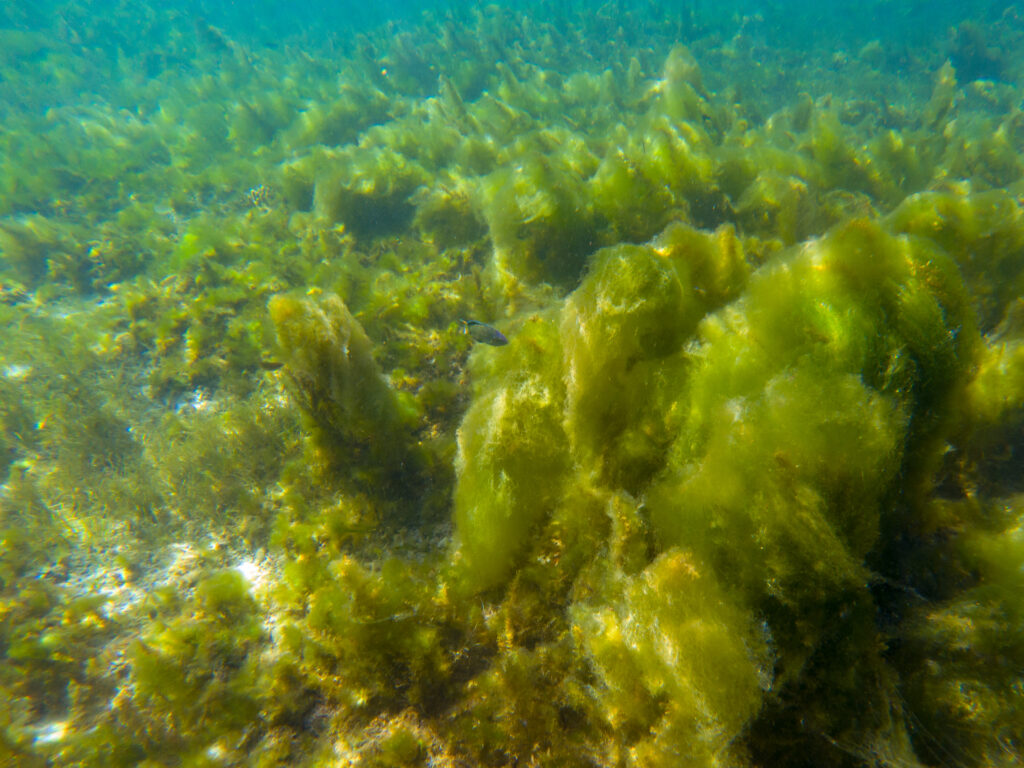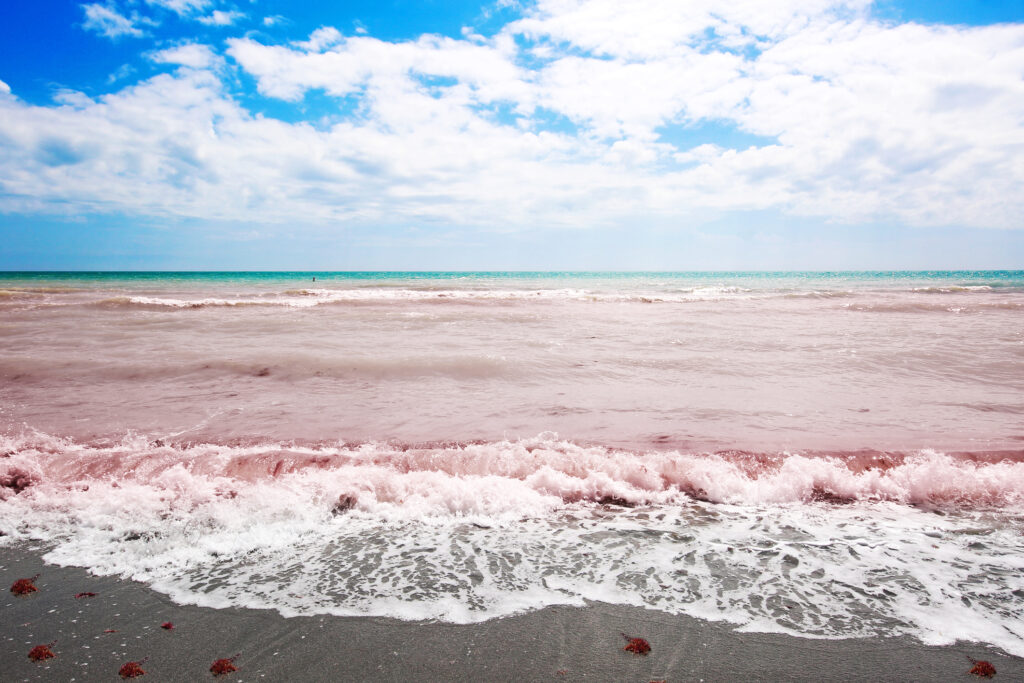Ever sit on the beach sunbathing, looking out at the beautiful blue ocean, and catch yourself wondering why it’s that colour? And no — it isn’t because of the sky, despite common belief. It’s a sea-riously common question, but what’s the real answer?
The main reason most oceans look blue is due to the way water absorbs and reflects light. Water absorbs longer wavelengths (like red and orange) and reflects shorter ones (like blue), which is why it often appears blue to the human eye. Additionally, if there are particles or substances in the water, this can also affect the colour.
The depth of the water plays a role too — shallower water tends to be lighter and clearer, while deeper water appears darker. Shallow areas with white, sandy seabeds reflect more light, making them look turquoise or pale blue. In contrast, deeper waters with darker seabeds absorb more light, creating a deep navy appearance.
But blue isn’t the only colour the ocean can be. In fact, oceans can appear green, brown, red, or even black, and there’s fascinating science behind each variation. From what’s floating in the water to how deep it is, let’s dive into the reasons oceans change colour…
Reasons oceans change colour
There are many different factors that explain why the sea appears blue, which we’ll look at in more detail below.
Depth
As sunlight moves through water, some colours disappear faster than others. Red and orange vanish first, while blue and violet travel deeper. That’s why deeper oceans look a dark, rich blue, while shallow areas — especially those with sandy or plant-covered sea floors — can appear lighter or greener.
Phytoplankton
Phytoplankton are microscopic, plant-like creatures that photosynthesise, much like plants on land. They contain chlorophyll, which reflects green light, often giving the ocean a greenish tint. Phytoplankton are also a crucial part of the marine ecosystem, forming the base of the ocean food chain.

Sun and clouds
Clouds don’t directly change the colour of the sea, but they affect how we perceive it. Cloud cover blocks sunlight, dulling how vibrant the sea looks. Over time, changes in light intensity can even impact phytoplankton growth, which in turn affects colour.
Sediments (solid materials)
Sediment in the ocean — from river runoff, storms, or stirred-up seabed — can scatter light and change the water’s colour. It can make water appear brown, yellow, or even green, especially near estuaries or after extreme weather.
Human activity and pollution
In recent years, human impact has started to visibly alter the ocean’s colour. Runoff, oil spills and chemical waste all change how light is absorbed and reflected. These changes are often subtle, but they can have serious consequences for marine ecosystems. For example, suncreams can bleach coral, and plastic waste can cloud the water.
Exploring the different colours of the ocean
There’s a common misconception that the sea is always blue. But in reality, it can come in many colours — depending on what’s happening in the water.
Green
It might look like someone poured in food dye, but green water is caused by phytoplankton and algae blooms. You’ll often see this in nutrient-rich coastal zones, like the North Sea or Baltic Sea.
Brown
Brown water is common around the UK — especially in winter — due to stirred-up mud and silt. This is often seen near river mouths or after storms. (And yes, unfortunately, sometimes after sewage releases too.)
Red
No need to worry about a cut finger turning the sea red — red water is caused by red tides. These are harmful algal blooms that release toxins and affect both marine life and humans. They’re most often seen in places like the Gulf of Mexico or off the California coast. If you see red water, it’s best to avoid swimming in it.

Black
Black water might look ominous, but it’s usually just really deep — over 1,000 metres, where no sunlight can reach. In some rare cases, black water is caused by a ‘dark water event’, where high levels of organic matter or phytoplankton absorb the blue light. This is most commonly observed in Florida.
Glowing blue: When the sea lights up
In some parts of the world, the sea glows bright blue at night due to bioluminescent plankton. When disturbed, these tiny organisms emit light, and are mostly spotted in warmer waters like the Maldives, Puerto Rico, and parts of Thailand. It can even be seen occasionally along the UK coast during warm summer nights.
Respect our oceans and their beauty
While many ocean colours are naturally caused, human behaviour can worsen changes and damage delicate marine ecosystems. Fishing waste, plastic debris and even your shampoo can affect the health and appearance of our seas.
But the good news? You can help protect the ocean. Reduce plastic use, dispose of waste properly, and get involved in beach cleans on your next coastal trip. These small steps help preserve ocean beauty for everyone.
So, why is the ocean blue? It’s all about how light behaves — but it’s also a reflection of what’s happening under the surface. The sea’s colour can tell us a lot about depth, ecosystems, and even pollution.
By understanding this — and making simple changes — we can help conserve our oceans and ensure they remain a source of beauty, life, and inspiration for generations to come.
